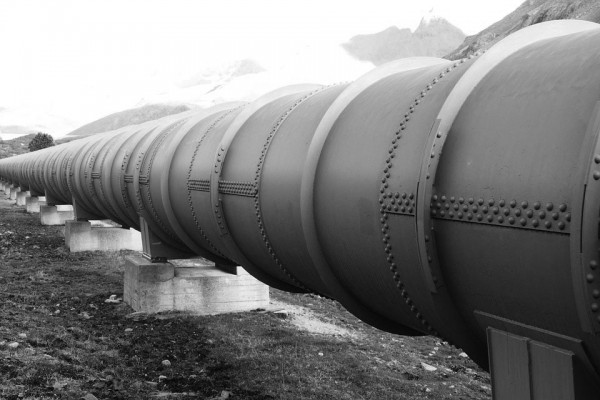
A controversial pipeline proposal is pitting New Paltz against the vaunted forces of the fossil fuel industry once again.
Pilgrim Pipeline is in the process of getting approval for its 178-mile pipeline project from Albany, New York to Linden, New Jersey. The company’s website states that the project “consists of two separate, parallel underground lines running between supply and distribution terminals.” The pipelines would be used to transport Bakken crude oil for cities up and down the East Coast.
On Jan. 20, the New Paltz Town Board unanimously passed a resolution urging the New York State Thruway Authority to “reject use of its right-of-way for the purpose of transporting oil or gasoline by pipeline.”
Deputy Town Supervisor Dan Torres, who co-authored the resolution, cited fears that the pipeline proposal would pose public safety risks to the people of New Paltz.
“The real danger is the fact that the New Paltz Fire Department is not ready to deal with potential explosions that could come with this pipeline,” Torres said. “The largest element of my opposition is the safety argument, which is a compelling narrative.”
Opponents to the proposed pipeline cite three major risks: leaks, water contamination and explosions. In the resolution, Torres highlighted concerns that there would not be 24/7 monitoring of the pipeline. He also said that the town, which has a ban on hydrofracking, has a moral opposition to the project.
“They’re only in this to profit off of outdated fuel sources,” Torres said. “The town board’s role is to represent people’s best interests and I think we’re doing that.”
Several towns and communities along the proposed pipeline route have vocalized opposition. Rosendale and New Paltz have recently taken an active role among Hudson Valley communities in standing against the project.
Paul Nathanson, a spokesperson for Pilgrim Pipeline, said that since the project is in the early phases of the state-led process there are certain parameters that are likely to change by the time construction starts.
“Any time there’s a new energy infrastructure, whether it’s wind, oil pipeline, solar panel, etc., people are always going to be concerned,” Nathanson said. “There is a defined process to get approved in New York and there will be public hearings and information sessions in the future. If people are curious or have questions, they can read the application on our website. We will also continue to meet with local officials.”
A statistic cited in the resolution stated that between 2003 and 2013, there were oil spills from pipelines nearly every other day, according to information provided by the U.S. Department of Transportation’s Pipeline and Hazardous Safety Materials Administration (PHSMA).
Nathanson disputed this statistic by claiming that these spills are likely due to older models of pipelines, including some that are reliant on 19th century technology. The new pipeline models that Pilgrim would use for this project are currently the safest mode to transport energy resources, according to Nathanson. He also countered that there were more water contamination risks from the current barging projects in the Hudson Valley than from Pilgrim’s proposal.
Torres said that the company has not been forthright in their handling of this project, going as far to describe their actions as “corporate bullying.” Regardless, Torres was optimistic that New Paltz and the coalition of communities opposed to the plan would be able to defeat the proposal.
“They look at this as a by-any-means measure, they’re only in this for a profit,” Torres said. “There’s a lot of money on the line for them. This is our first opportunity to voice our opposition to the plan and I am going to do everything I can to stop it.”
